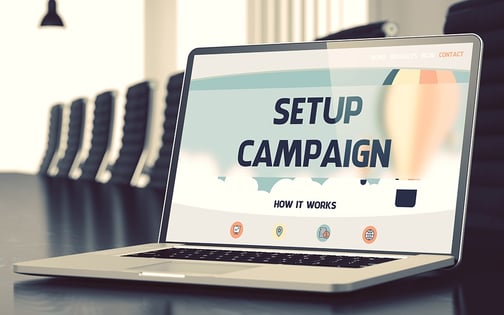
Your metaphorical house of inbound marketing is taking shape nicely! We started with a blueprint to map out your plans, laid the foundation of inbound traffic with some search-optimized articles and created the external structure to capture leads with premium content offers.
Now it’s time to ensure that we secure everything inside our new home with a well-built, protective roof. Safeguarding your valuables is critical – you need to ensure that none of your digital marketing assets get ruined, stolen or accessed by unauthorized parties.
This article is lesson 4 in a 12-part series: The Ultimate Guide to Inbound Strategies and Tactics
In order to attract even more visits to your site, capturing relevant leads for later follow-up, you’ll be sharing a great deal of free, valuable information in the form of both regular blog posts and premium content.
With the right security arrangements in place, you'll be reasonably certain that no one else can capitalize on your precious content without crediting or contacting you. This is especially important, since the whole point of these assets is to attract your ideal customers and inspire them to give you permission to keep in touch with them. Without the benefit of traffic or a prospect's email address, all the hard work you’ve invested in creating these assets would be squandered. Here are four steps to follow that will allow you to form a secure, protective roof.
Every piece of content you produce is sharable, and it's not all going to sit behind a lead capture page. Digital publishing is hardly platform-specific nowadays. Ideally, a high percentage of the people who come into contact with it will help you to circulate it among their peers, exponentially generating more relevant traffic and brand awareness for you. Imagine how many opportunities you’d miss if even 5% of the people who saw your content didn’t realize it came from you!
Avoid wasting your content creation efforts by branding every single piece of content you publish – that includes every infographic, whitepaper, webinar and slide deck. Your logo should appear everywhere for a reason far more pragmatic than simple pride. If people viewing your content don’t see your logo, they won’t know where to go for further information. If they're open to advancing along your sales funnel and you fail to clearly indicate who you are, you’ve just wasted an opportunity.
There are several resources available to brand your content. Even PowerPoint empowers the user to brand every slide by utilizing the "Master" view. Yes, your logo should appear on every single slide in your deck. It certainly doesn’t need to be giant or overpowering – it’s simply an indication of where to turn for clarification, questions or more content with the same value.
Blog posts, and even premium content, should include embedded links to additional resources within the text itself, so the reader can dive deeper into the subject if he or she is so inclined.
There are two types of links to embed: internal and external. The internal links, which we'll call “contextual,” lead readers to another piece of your branded content within your site, offering them a more in-depth description of a concept, product or service you offer. Leading your readers to spend more time on your site and gather additional information serves to increase your chances of converting them – this is the type of branded, immersive experience that you want to forge.
As you create more content, you will ultimately form a library from which you can pull the most compelling "evergreen" pages – non-timely content that is especially effective at conveying your brand's worldview, no matter when it is accessed. As you create these pages, maintain a list of them, itemized by topic and URL – a simple Google Spreadsheet should serve this purpose just fine. This list will serve as a quick resource for you, making internal link embedding an efficient step in your ongoing content creation processes.
In addition, the list offers other benefits – you can share it internally with your sales team so they know where to point potential customers for in-depth explanations. Moreover, if a certain topic in your space suddenly becomes hot on social media, you’ll be ready to mobilize quickly to promote your relevant content on that subject without having to comb through your archives.
The second type of embedded link is "external," which refers to anything clickable that will lead visitors away from your site. These are important, too, especially if you think some of your audience may be unfamiliar with your industry’s jargon – it’s an opportunity to clarify your meaning, without lengthening or complicating your content.
Another advantage to external links is credit. Everybody loves receiving credit. When you link to someone else’s content, it’s a real compliment. In the digital marketing world, appreciation is shown by sharing content, so the more often you refer to someone else's content, the more likely he or she will be to share yours, ultimately generating traffic for both of you. Linking out to third-party resources is also good for establishing credibility. It's like saying to your audience, "Don't take my word for it – here's what a trustworthy independent source has to say about this."
Just make sure that when you set up the external links in your content, they'll open in a new browser tab. This way you won't be sending your site visitor somewhere else that they may never return from.
The last thing you want to do is invest time creating valuable content without incorporating a call-to-action (CTA). A good CTA can make is the difference between a curious visitor and a lead. Since your goal is to onboard those who consume your content, if you don't make it explicitly clear to them what they're meant to do after reading, they're far less likely to do it.
Follow a CTA best practices guide to be certain that you’re capturing the most leads out of every piece of content you produce. Customize CTA buttons and boxes to have optimized colors, microcopy, designs and placements.
Writing the microcopy for your CTA starts with the action you want your audience to take. Use a transparently actionable verb like join, click, subscribe, try, buy or add to cart, so readers know what to expect upon clicking. Avoid industry jargon or vague wording – people don’t like to guess, and when confused, are more likely to abandon ship and head elsewhere.
In addition to the right wording, you need an attractive, attention-grabbing design. Hubspot is an excellent soup-to-nuts resource for designing your CTA, since, in addition to design, the platform offers the ability to measure the performance of each individual CTA and its location, A/B test everything from the offer to the color and utilize “smart” calls to action that can dynamically change based on each specific visitor’s interest, industry or stage in your funnel.
For a more down-and-dirty, just-create-my-graphic-already tool, try Canva. There are even tutorials on exactly how to create a Canva CTA for a WordPress site.
The role of landing pages and thank you pages is to protect your premium content behind a registration wall. Since your goal is to garner permission to directly contact prospects for ongoing marketing via email, these two touchpoints in the opt-in experience are indispensible.
Businesses often make the mistake of creating amazing content only to end up disappointed when visitors don’t convert into qualified leads. Optimizing landing pages for conversions is imperative.
First, focus on your landing page copy. Make sure that your wording is benefit-focused ("what's in it for me?") versus feature-focused. Your goal is to convince the visitors that your premium content will enhance their knowledge, solve their problems, inspire them or otherwise better their lives in some way.
Second, make it easy for your visitors. Limit the amount of information you require for access to premium content, and keep the look and feel of the page clean and distraction-free. Ultimately, you’re after their email addresses, so keep your forms as brief as possible. Ask online shopping experts when people drop out of the sales funnel, and they’ll tell you that the instant too many fields are required.
Your landing page requires four ingredients: a headline, a brief benefits-emphasizing description of what’s being offered, a supporting image or video and (most critical) a simple form to capture information. Avoid the temptation to over-embellish and include internal links here – the sole experience on offer via a landing page needs to be the opt in.
Building a landing page is easy. Unbounce is a user-friendly, cost-effective and rich-featured platform that doesn’t require any technical or programming knowledge.
A thank you page is similarly easy to establish. Its only purpose, user experience-wise, is to serve as the place where newly captured leads can access whatever you've promised them in exchange for their information. Therefore, all this page needs to do is thank your new lead, confirm the action just taken, and direct him or her to the relevant fulfillment mechanism. This is also the ideal place to promote a limited-time offer, encourage leads to head back to your blog or share your landing page offer with their peers. Tutorials abound on how to create an effective WordPress thank you page or you could return to your third-party landing page of choice, which will handle this for you.
Even though it’s free, your content is often the most valuable asset you have in your inbound marketing arsenal. It’s your proverbial carrot for advancing your customer along the sales funnel. It's therefore worth protecting with a well-built roof of branding, links, calls-to-action and registration walls.
A content and social media marketing specialist, Ben Jacobson joined the Lean Labs team in the summer of 2014. Ben has been active as a digital branding professional since the early days of social media, having overseen projects for brands including MTV, National Geographic, Zagat and Wix. His writing has appeared in Social Media Explorer, Search Engine Journal, Techwyse and the Mad Mimi Blog. Ben resides just south of the Carmel Mountain ridge in Israel with his dashing wife and two sprightly descendants.
The only outsourced growth team with a track record of 10X growth for SaaS & Tech co's. 🚀

The Growth Playbook is a FREE guide to planning, budgeting and accelerating your company’s growth.

by Mallory Kuhn

by Mallory Kuhn

by Mallory Kuhn